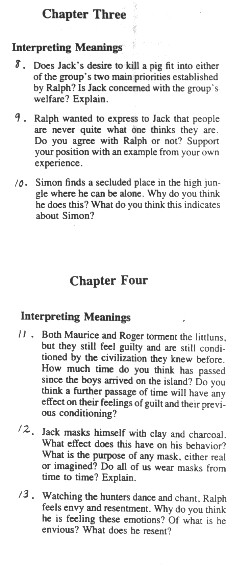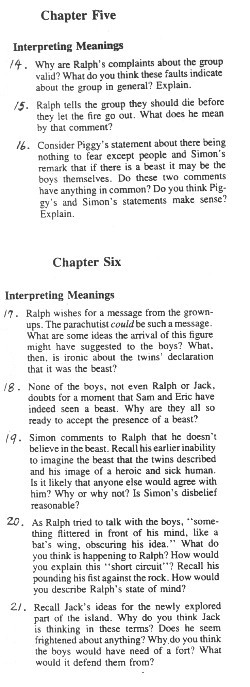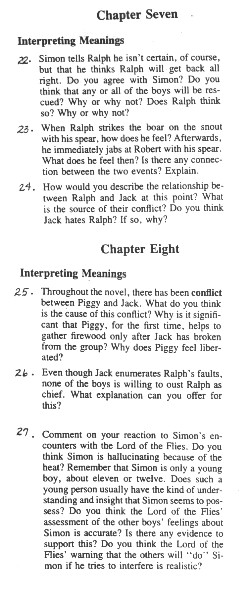
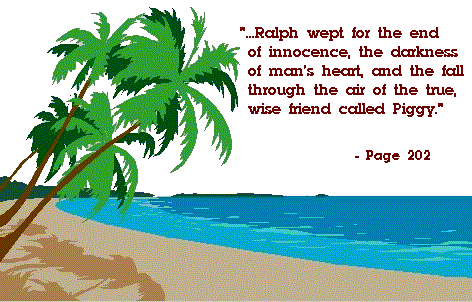

William Golding (1911-1993)
English novelist who received the Nobel Prize for Literature in 1983. The choice was unexpected, because from the English writers novelist Graham Greene (1904-1991) was considered the strongest candidate.
William Golding was born in the village of St. Columb Minor in Cornwall. His father was a schoolmaster with radical convictions in politics and strong faith in science. Golding started writing at the age of seven, but following the wished of his parents he studied studied natural sciences and English at Brasenose College, Oxford. His first book, a collection of poems appeared in 1934, a year before receiving his B.A.
After graduation Golding became a settlement house worker, and also wrote plays in London. In 1939 he moved to Salisbury, where he began teaching English at Bishop Wordsworth's School. During World War II he served in the Royal Navy, taking part in the Normandy invasion.
In Salinbury Golding wrote four books, but did not get them published. His novel LORD OF THE FLIES was turned down by twenty-one publishes, until it finally appeared in 1954. The book became immediate success in Britain and bestseller among American readers in the late 1950s. His breakthrough novel was followed by THE INHERITORS (1955) depicting the extermination of Neanderthal man by Homo Sapiens, PINCHER MARTIN (1956), story of a naval officer, who faces death on his torpedoed ship, and FREE FALL (1959), which is set in contemporary society.
Golding resigned in 1961 from teaching and devoted himself entirely to writing. His works from the historical novel THE SPERE (1964) devoloped then in two directions: the metaphysical with the theme of the fall from childlike innocence into guilt, and the social without mythical substructure.
Among Golding's later works is trilogy RITES OF PASSAGE (1980), CLOSE QARTERS (1987, and FIRE DOWN BELOW (1989). His best known works is Lord of the Flies, which has been translated into many languages and filmed in 1963 and 1990. It is an ironic comment on R.M. Ballantyne's Coral Island, describing of a group of childred, who are evacuated from Britain because of a nuclear war. Their airplane crashes on an uninhabitated island, and all the adults are killed. The boys create their own society, which gradually degenerates from democratic, rational, and moral community to tyrannical, bloodthirsty, and evil. Golding's view is pessimistic: human nature is inherently violent, which reflects the mood of the post-war and post-Hitler years and comments the 19th optimism of progress and education. - SEE: Daniel Defoe and Robinsonade, a story of a person marooned on a desert island.
William Golding was knighted in 1988. He died in Perranarworthal on June 19, 1993.
--http://www.infoseek.com

Vocabulary

Reading Guide Questions

Journal - Hog Article
Read the following articles. In a standard journal give a summary of them and indicate how these factor into what we have been working on lately: |
 |
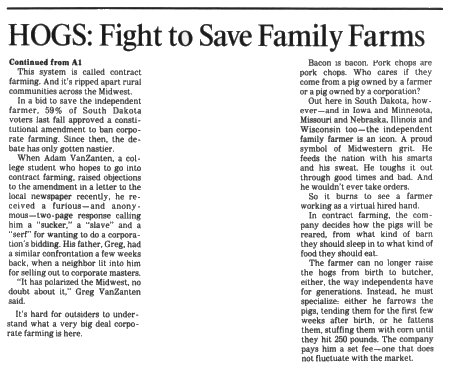 |

Island Map
In the Lord of the Flies there are many physical descriptions of the island. For example, in Chapter 1 the island is described as being boat-shaped. On a piece of paper, whatever size you like, make a map of the island.
Label each area or occurence given below with its number (for example, label the beach with the number 1, the lagoon with number 2, and so on). Sketch such physical features as castle rock, the mountain top, the assembly platform, and so forth. Use descriptions in the book to guide your sketches. The chapters where you can find those descriptions are given to the right. Add features not in this list if you like.
Be as creative and artistic as you wish. You might want to indicate the topographical elevation of various areas of the island. Look at ta topographical map in the library for a sample. You might want to use diiferent colors for various areas (for example, green for the forest, yellow for the beach) depending on descriptions in the book. Before you begin, be sure to label the directions -- north, south, east, and west. (Find the mention of the position of the afternoon sun shining on Ralph in Chapter 2 and the position in whichRaph sits on the assembly platfom in Chapter 5 to determine the directions
|
| 1. beach | Chapter 1 |
| 2. lagoon | Chapter 1 |
| 3. bathing pool | Chapter 1 |
| 4. scar | Chapter 1 |
| 5. coral reef | Chapter 1 |
6. end of the island
(opposite end from castle rock) 1 | Chapter |
| 7. mountain and its top | Chapter 1 |
| 8. circular hollow | Chapter 1 |
9. clearing with "candle buds"
and eventually the sow's head | Chapter 1 |
| 10. burnt area | Chapters 2 & 7 |
| 11. shelters | Chapters 3 & 5 |
| 12. sharks | Chapter 4 |
| 13. fringe of palm trees | Chapter 4 |
| 14. assembly platform and logs | Chapters 1 & 5 |
| 15. rocks (latrine) | Chapter 5 |
| 16. castle rock | Chapters 1 & 6 |
| 17. parachutist | Chapter 6 |
| 18. heavy waves | Chapter 7 |
19. hunters' banquet
and scene of Simon's murder | Chapter 9 |
| 20. fire rock | Chapter 9 |
| 21. place where Piggy dies | Chapter 11 |
| 22. Ralph's first hiding place | Chapter 12 |
| 23. final fire | Chapter 12 |
| 24. cutter on the beach | Chapter 12 |










